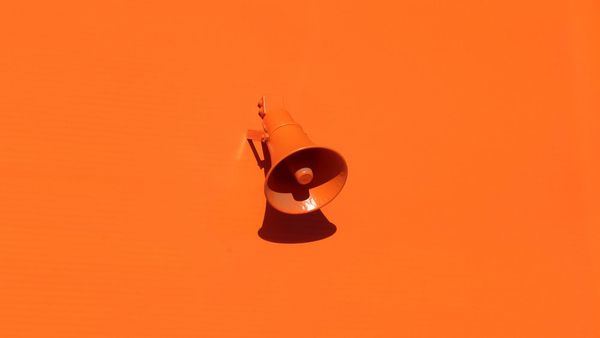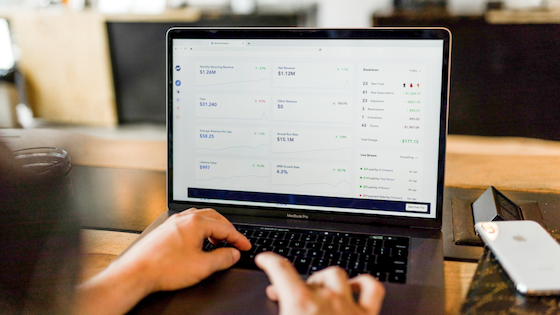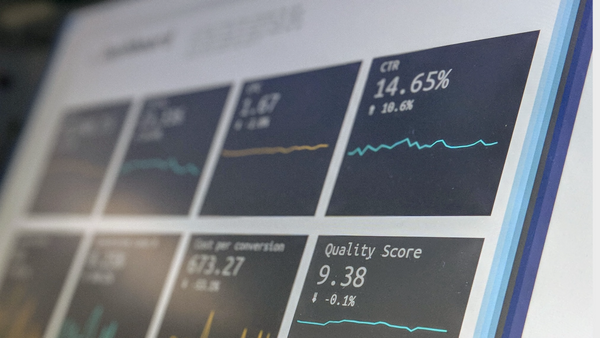9 minute read
Amazon Product Launch Essentials: Secrets to Ranking on Amazon Every Seller Should Know
There are over 12 million products being sold on Amazon right now. That’s a whole lotta options for the average Amazon shopper. With all those different Amazon products, it’s never been easier for your new product to get lost somewhere around page 37 of the shopping results.
So, how do you make sure your product is seen by as many customers as possible when launching on Amazon? The answer is by improving your product rankings! In this guide, we’ll take a look the hidden tips, tricks and secrets every seller should know about getting the best rankings for their next Amazon product launch.
Know There are Different Types of Amazon Rankings
First of all, there are two types of ranking on Amazon, Best Seller Ranking and organic A9 rankings. These two types of ranking play a pivotal role in determining how much exposure your Amazon product listings get:
Best Seller Rankings
Best Seller Ranking (more commonly referred to simply as “BSR”) works in a pretty straightforward way. How does Amazon calculate Best Seller rankings? Amazon is going to rank you by factoring in a combination of elements that includes sales and recency.
Organic Amazon A9 Rankings
Organic A9 rankings on the other hand are more nuanced and somewhat subject to speculation. We know that it has everything to do with relevance. What we don’t know exactly is how that relevance is determined.
We do know your rankings change depending on which keyword a shopper is searching for. Your listing can be 1st on page 1 when typing in a certain keyword, or #14 on page 3 when typing in a different keyword. So, how exactly does the Amazon A9 algorithm work when it comes to ranking product keywords?
Anatomy of an Amazon Organic Ranking
The key to understanding how organic Amazon ranking works is to understand the philosophy of Amazon CEO Jeff Bezos of putting customers first. Amazon has a strong stance of putting customers first, always. The A9 algorithm is designed to serve customers. The way it works can be best summarized by a quote from Amazon CEO Jeff Bezos himself: “We’re not competitor obsessed, we’re customer obsessed. We start with what the customer needs and we work backwards.”
So let’s apply what Jeff says and walk through a customers’ experience on Amazon and work backwards. Let’s say that one day you’re standing in your front yard minding your own business and your neighbor Gary says something like, “Nice lawn you got there.” You know Gary’s being sarcastic, but you also know your lawn could be in a better shape. So what you do? Naturally, you go on Amazon and type in “lawnmower” in the search bar, and you see something like this:

You’ll see a selection of different types of lawnmowers like these. But what makes one product appear on the first page while another is sent to page 10? A number of factors can lead to your product being pushed up or down in the rankings, such as:
- Your Inventory Level – If you’re out of stock, your organic ranking will start to plummet. Amazon has no interest in keeping something highly visible – if no one can buy it!
- Product Star Rating – If you keep getting bad reviews, Amazon will start to push you down. They don’t want unhappy customers.
- Whether Your Listing is Indexed (or Not) – If you’re not indexed on a keyword, no one will be able to find you when they search for the term. The best way to check if your listing is indexed on a certain keyword? Type in your ASIN and that keyword in the Amazon search bar.
Unraveling the Relationship Between Amazon PPC and Organic Rankings
PPC can have a lot of influence on your organic ranking. Remember, if someone types in a keyword and buys your product, you rank higher on that keyword. If you have an ad on a certain keyword and you make a sale, then your organic ranking goes up, right? As far as we know, a sale is a sale and the Amazon A9 algorithm doesn’t seem to distinguish between a sale made by clicking on a sponsored product or not.
How Do You Get the Amazon’s Choice Badge?
If you’re really good at getting Amazon organic rankings, you actually get a medal! Okay, a blue sticker badge from Amazon called the “Amazon’s Choice” Badge – but still, it’s always nice to be appreciated. Now, how you actually get “chosen” by Amazon and “who” chooses you is shrouded in mystery. Amazon officials have actually dodged the question of how this celebrated title is bestowed upon an Amazon product listing.
“Amazon’s Choice is a feature that helps Amazon customers save time and effort when searching for common, everyday items and suggests highly-rated, well-priced products with Prime shipping.”
Let’s unveil the mystery a little more. Here’s what we do know about the “Amazon’s Choice” Badge:
- All listings with the “Amazon’s Choice” badge must have Amazon Prime shipping.
Any product with a badge must have a high rating. We can assume this means a high number of stars, such as 4 stars or more. (Makes sense that Amazon wants customers to have the very best.)
“Amazon’s Choice” is related to keywords. If you have a product that’s “Amazon’s Choice” for a certain keyword, you may or may not find it with different keywords.- Let’s take a look at what happens when we search for “pillow” on Amazon:

We can see that this Dreamnorth Pillow is Amazon’s choice for “pillow.” But here’s what happens when we search for “plush pillow”:

We see that the Dreamnorth pillow is one of the very first few results, however, it’s not holding the badge. That leads us to unraveling a few more secrets behind “Amazon’s Choice”…
You can have multiple “Amazon’s Choice” badges. There’s nothing stopping you from having dozens of Amazon’s choice badges. In fact if you’re doing a good job as a seller, you probably have them already.
The “Amazon’s Choice” product can be bought with zero clicks?! Yes. Zero. You read that right! This is a very juicy hidden secret about the badge. If you use one of your voice-activated devices (Like Echo or Alexa), and say “Alexa, order a pillow,” the “Amazon’s Choice” product would be the choice for that keyword.
We can also speculate that there might be additional factors, like a ratio. For example, let’s say that if there’s 100 sales a month from a certain keyword, the one that has 30 (30%) or more would get the badge. If no listings have a 30% (or any set percentage or more), no one gets it — even if all the other requirements are met (Amazon rating, prime shipping, etc.)
There might even be a bachelor-type scenario going on behind the scenes where the algorithm assigns a rose each week to a different Amazon product (minus the one-on-ones in the hot tub). In this scenario, Amazon awards a rose to different listings each week — until there’s only one rose left. Then the process resets at some point to re-choose the winner.
Does Amazon Best Seller Rank Accurately Reflect Sales?
Do you think that the Amazon Best Seller Rank (BSR) is a measure of how good you are at selling compared to other listings competing with you on Amazon? Because, yeah, that’s exactly what it is! But there’s more to it than just that. That’s because most listings have two bestseller ranks, some even more. Let’s take a closer look at an Amazon product listing to see BSR in action, such as the one for this tent:

How Do I Find My Amazon Best Seller Rank?
When you open the listing on Amazon and scroll down, you’ll see the tent has two bestseller rankings:
1) The first one is in its department (Sports & Outdoors)
2) The second is in its subcategory (Family Camping Tents)
An Amazon product listing can actually be in several subcategories, and it’s fairly common to find examples of that. But how does it come into play for Amazon shoppers? Some people actually don’t browse by typing in keywords, they just go straight to a department and click on the subcategory matching their interest.
If you’re in the top 100 (or even better top 10) in 2 or more sub categories, you can almost certainly bet that it’ll bring a healthy dose of sales your way. So being in the top of your sub category certainly pays off, but what about being in the top 100 of your department? Well, for starters there’s a page to see the top 100 results in a department, just like in any subcategory. However there’s another very significant benefit and… it’s another award (badge)!
What’s the Amazon Best Seller Badge?
Not sure what the Amazon Best Seller Badge is exactly? It’s that little orange ribbon in the corner that just gives you a little bit more confidence that the product you’re considering is tried and tested. An interesting thing about the Amazon bestseller badge is that it will follow a listing anywhere. It’s not related to a keyword, it doesn’t matter which keyword you searched for. If a product from the departments’ top 100 is among the search results, it’s going to have that bestseller badge.
In addition to that, even as a sponsored product that listing will get to keep its badge. There’s only one exception: The badge will not show if you search for a keyword for which it had an Amazon’s Choice badge. Here’s an example:
If we search for “wireless charger,” we find that this listing has the “Amazon’s Choice” badge for it:

If we scroll down and take a look at its BSR in the “Cell Phones & Accessories” department is 5.

When we try to type in a different keyword, such as “wireless charger 7.5W”, we see this:

We see that the Amazon “Best Seller” badge has priority even over the Amazon’s Choice badge. Again, we see Amazon putting the customer first. The people’s choice (Best Seller badge) takes priority over the product that’s “Amazon’s Choice.”
Ready to Launch? Start Ranking Your Products Even Higher!
New Amazon product listing will get lost all the way at the bottom of the rankings without some savvy know-how. An essential part of every launch process is making sure your products get seen (preferably not somewhere around page 37!). Use the combination of organic and PPC strategies you’ve learned to make sure your next Amazon product launch goes straight to the top.










